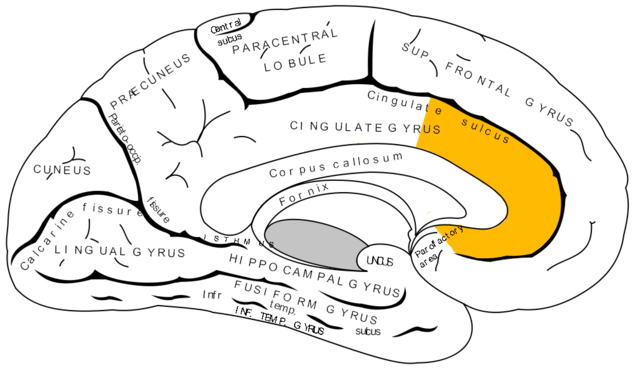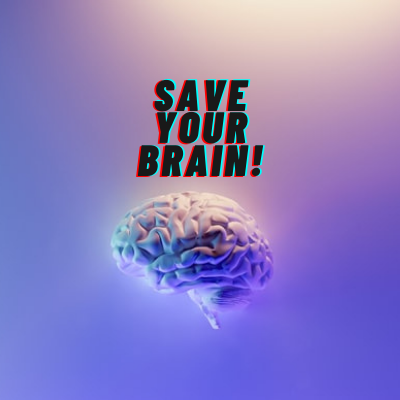The Anterior Mid-Cingulate Cortex Can Make You Persistent
The human brain has a wide variety of functions and it is the controller for all living things. However, everyone functions differently, often referred to as being “wired differently.” Even if someone were to be lazy or unmotivated there is always a person who can make decisions on refining themselves. This of course takes persistence and patience but there is also a need for consistent practices. In other words, continuously conditioning themselves. This in turn will build resilience in oneself. An individual only gets better through practice and executing certain activities that can be challenging. With that, leads to growth, however, a person can lose much progress if they stop their practices.
There is no such thing as “self-mastery” because the master remains the student.
This is why continuous practice is important.
What Is The Anterior Mid-Cingulate Cortex?
The brain is comprised of many sections, each with specific tasks. There is the anterior mid-cingulate cortex (aMCC). This part of the brain is responsible for decision-making, emotional regulation, pain and reward processing, and cognitive control. This coincides with the prefrontal cortex as it supports the executive function of the brain.
The aMCC is located above the corpus callosum, extending from the frontal lobe.
This part of the brain is known to make a person tenacious. It is only as good as someone makes it thicker. Thickness is dependent on the cortical as this can also become thin. A thicker aMCC generally indicates better brain function and processing, while a thinner aMCC can lead to the opposite.

Credits: By Brodmann, Mysid. Colured by was_a_bee. – File:Gray727.svg, Public Domain, Link
Temporal Integration
A key factor that the aMCC is heavily involved in is temporal integration. The brain is always taking record of everything that is in the environment. Since the brain is trying to understand what is happening. Living beings are in a continuous plane so it is important for the brain to understand the sequence of events, learning, decision-making, and take action based on the situation.
This process is critical for decision-making and cognitive control, making the brain more efficient in logical reasoning. The aMCC adapts to handle emotions, maintain control, and build resilience, as many people learn from trials and errors, experiences, or similar occurrences.
Enhancing The Anterior Mid-Cingulate Cortex
There are methods for strengthening cognitive function. It is no different from doing what is primarily healthy for the body. Here are some activities to consider:
- Exercise: It is no secret exercise is healthy for the brain as it increases oxygen and blood flow, stimulating brain function.
- Practicing Mindfulness: Whether it’d be meditation, yoga, tai chi, or breathing exercises. This will promote attention and calmness as the brain is able to function well during calmness.
- Diet: Avoiding highly processed consumables will do absolute wonders for the brain. Consuming whole foods rich in quality protein and omega-3 fatty acids contributes to brain health.
- Cognitive training: This could be a slew of items but it would have to be along the lines of problem solving. Challenging enough that an individual is able to do some critical thinking.
Lastly, for the aMCC or any part of the brain to gain cortical thickness is getting involved in doing difficult activities. It may not sound appealing but when doing tasks that appear undesirable it strengthens the aMCC.
Balancing out dopamine levels can also help with brain function. Check out: Balanced Dopamine Can Maximize Your Life.
Initializing The Anterior Mid-Cingulate Cortex
When presented with some sort of challenge oftentimes there is an analysis being made. The aMCC predicts how many resources are needed to achieve the goal. The amount of energy will be provided to accomplish the task at hand. Even when experiencing unforeseen issues the aMCC is activated to assess the situation and activates its functions.
As uncomfortable as it may sound this is an effective approach to build and thicken the cortical for the aMCC. Through difficult tasks and situations, the need to maintain motivation, energy, and effort will lead to greater persistence. Based on the goal the expected reward for completing the challenge will be a stronger motivator to help with additional resources (energy and focus).
A Functional Communicator
The brain works well holistically just like the body. The tenacious area of the brain is involved in autonomic processing, interoception, executive function, motor planning, and sensory integration. This enables it to perform domain-general computational functions essential for mobilizing resources to meet task needs.
This means the midcingulate cortex either maintains or modulates certain parts of the body. Whether it’d be with movement, hormones, heart, or others. The process of allostasis supports energy regulation. The purpose of this is to maintain energy levels based on a response (stressors). This adaptive response ensures the brain can effectively handle demanding situations.
As in “We are in a situation, we need more energy to handle it.”
This induces cognitive flexibility, allowing the brain to adapt and change gears based on the anticipated outcome.
White and Gray Matter Are Essential
These are important items that support brain functionality. Especially with the aMCC as gray matter helps process information and white helps communicate with other brain regions. The greater the volume the better at processing and integrating information over time (white and gray matter volume).
Gray matter is like a processing unit, where much of the brain’s work happens. It is made up of neurons (the brain’s nerve cells) and other important cells. Gray matter helps with thinking, feeling, and moving. So activities such as learning new information, solving problems, and controlling muscles are crucial. For instance, when solving a complex problem or remembering important details, gray matter is hard at work. In conjunction with this is white matter which are like cables that connect other parts of the brain together, helping different parts of your brain communicate with each other.
White matter is made up of long fibers called axons, covered in a fatty substance called myelin, which makes them look white and helps messages travel really fast between different parts of the brain. White matter acts like a super-fast highway to pass messages to other brain regions, allowing them to share information quickly and efficiently.
Together, gray matter and white matter ensure that the brain can do everything it needs to do. Gray matter processes information, while white matter ensures the information gets where it needs to go quickly and accurately. Different areas of your brain have varying amounts of gray and white matter, depending on their function. Keeping the brain healthy means taking care of both gray and white matter.
Conclusion
The anterior midcingulate cortex (aMCC) serves as the main contributor for cognitive control, emotional regulation, predicator for resources, and the decision-making process. It is also considered to be a functional hub as it communicates with other brain regions. Providing the information and resources needed to handle tasks or situations. Very much so the aMCC needs to be continuously trained in order for it to maintain or be thicker. If not, the cortical will thin which will lead to cognitive impairment. To keep the brain healthy one can exercise, attempt to solve complex problems, meditate, and consume a balanced diet.
If wanting to build immense willpower the person will have to engage in complex tasks. The challenge will act as a stressor so the aMCC will certainly be delivering the needs to overcome it.
Sources
- Role of anterior midcingulate cortex in self‐reward representation and reward allocation judgments within social context
- Successful cognitive aging is associated with thicker anterior cingulate cortex and lower tau deposition compared to typical aging
- The midcingulate cortex and temporal integration
- The Tenacious Brain: How the Anterior Mid-Cingulate Contributes to Achieving Goals






